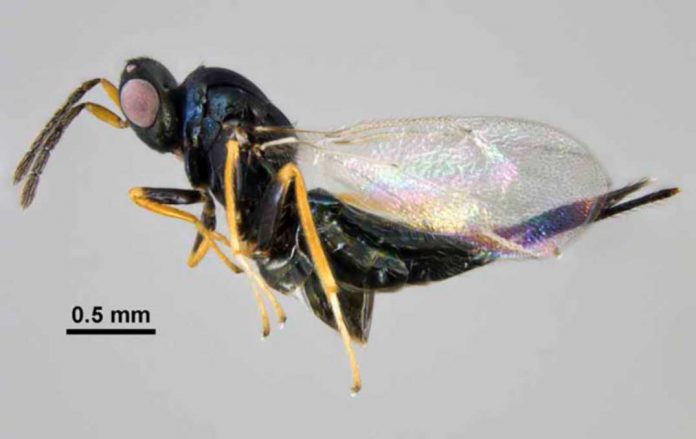LITTLE CURRENT—The Dairy Farmers of Ontario (DFO) Manitoulin West Sudbury Dairy Producers annual general meeting was held at the Little Current United Church hall on Thursday, March 9. Following a beef lunch prepared by the Little Current United Church Women, local dairy producers were brought up to speed on the latest trends and concerns facing the industry by DFO representatives.
During the dairy committee elections, Keith Emiry was acclaimed chair and Sally Orford was acclaimed treasurer secretary. Following discussion, the committee decided that with the small number of producers in the area it would be simpler to have everyone on the committee, although limited to one vote per licence. A quorum will consist of a majority of the producers.
The decline in the number of dairy producers in the zone reflects the trend overall in the province, according to a report provided by Steve Runnalls, Region 12 director for the Districts of Northern Ontario and Haliburton. Although there have been 46 new producers come on line in the past year, when set against the number of producers remaining in the industry overall there was a net decline of 106.
Zone O service representative Jean Guy Seguin noted that there have been 11 new producers entered into the system in the North and five new entrants have accessed the New Entrant Quota Assistance Program (NEQAP). The P5 (Ontario, Quebec, Prince Edward Island, New Brunswick and Nova Scotia) group’s NEQAP “is designed to assist those with an interest in dairy farming who may not otherwise have the financial means or opportunity to get started in the industry. The P5 makes available up to 120 kilograms of quota per year for the program in Ontario. Subject to DFO issuing a licence to produce and market milk and approving an order to issue quota, DFO will allocate up to 12 kilograms of quota to each successful applicant. DFO allocates 12 kilograms of quota for five years and takes back one kilogram per year starting in year six.”
Mr. Seguin presented this year’s award certificates to local dairy producers. General certificates of excellence were presented to Pleasant Valley Farms of Billings and the Anstice family dairy farm (Oshadenah Holsteins) of Tehkummah. A coveted gold certificate was presented to Bud and Brad Wilkins who have been perennial recipients of the gold certificate recognition of outstanding quality for as long as anyone present could recall.
Mr. Seguin took the committee members through changes that have come to the screening process and quality assurance inspections process. As noted at the DFO meeting last year, inspections are now taking place without the significant prior notice that had been the case in previous years. The change in process did result in more deficiencies being uncovered and Mr. Seguin pointed out the significant financial impact that results from a fall from grace. Each visit costs the producer $250, and the result of a serious infraction will amount to several visits over two years to rebuild standing. That’s a $1,500 hit over the two years.
Traceability is definitely the latest focus of the industry, but several producers voiced dissatisfaction with the website and its interface, noting that while the website “recommends you take the course, it is not that easy to find.”
The issue is far from moot, as the six-hour course must be completed by May 1.
Mr. Runnalls noted that DFO pays for the veterinarian to train producers as a group. But if the training is to take place at a producer’s farm, they have to pay for it.
The challenges with traceability did not stop at the website, however, as one producer noted “there are four tags on every animal and one at the stockyard, you get the report back from the stockyard and the number means nothing.”
Since animals might be sold a number of times before arriving at a stockyard, the initial number identifying the source producer has little validity when it comes to tracing the animal.
“It is an issue we are aware of,” agreed Mr. Runnalls. “For traceability to work it has to be followed throughout the system.” The advice was put forward that producers should “take a photograph when you put the animal on the truck. You all have phones in your pocket, take a picture on the truck and protect yourselves.”
Veterinarian Erica Spec was introduced to the committee members and she indicated she was willing to provide the required training for local producers.
Mr. Runnalls reported that, among the P5 provinces, “the volume of milk is down, but there is more butter fat,” adding “that is a good thing.”
Cheese sales have been really strong, and since almost 40 percent of milk goes into cheese, that is a positive indicator. Mr. Runnalls also noted that the Tim Horton chain is moving to a whole milk product in their lattés. “They have found they can make a better product,” he said. “Before there was a teaspoon of milk in the coffee, now we are seeing 12 ounces of milk with a teaspoon of coffee in it.” But with that positive news there comes some challenge, as too much milk handling through pumping etc. changes the way the milk froths, so new methods of production will be required heading into the future.
The new free trade deal with Europe will be opening up the Canadian market, posing a challenge to the industry, but the federal government has committed to providing assistance to increase productivity through equipment on a 50/50 cost share.
Financially, the local dairy farmer committee is in good shape, according to the treasurer’s report delivered by Ms. Orford. The committee finances show a balance of $1,600 remaining on the books at year’s end. Ms. Orford noted that there might be some additional expenses relating to the closure of the RBC branch in Massey and the account relocation to Espanola, but that none were anticipated at this time.





